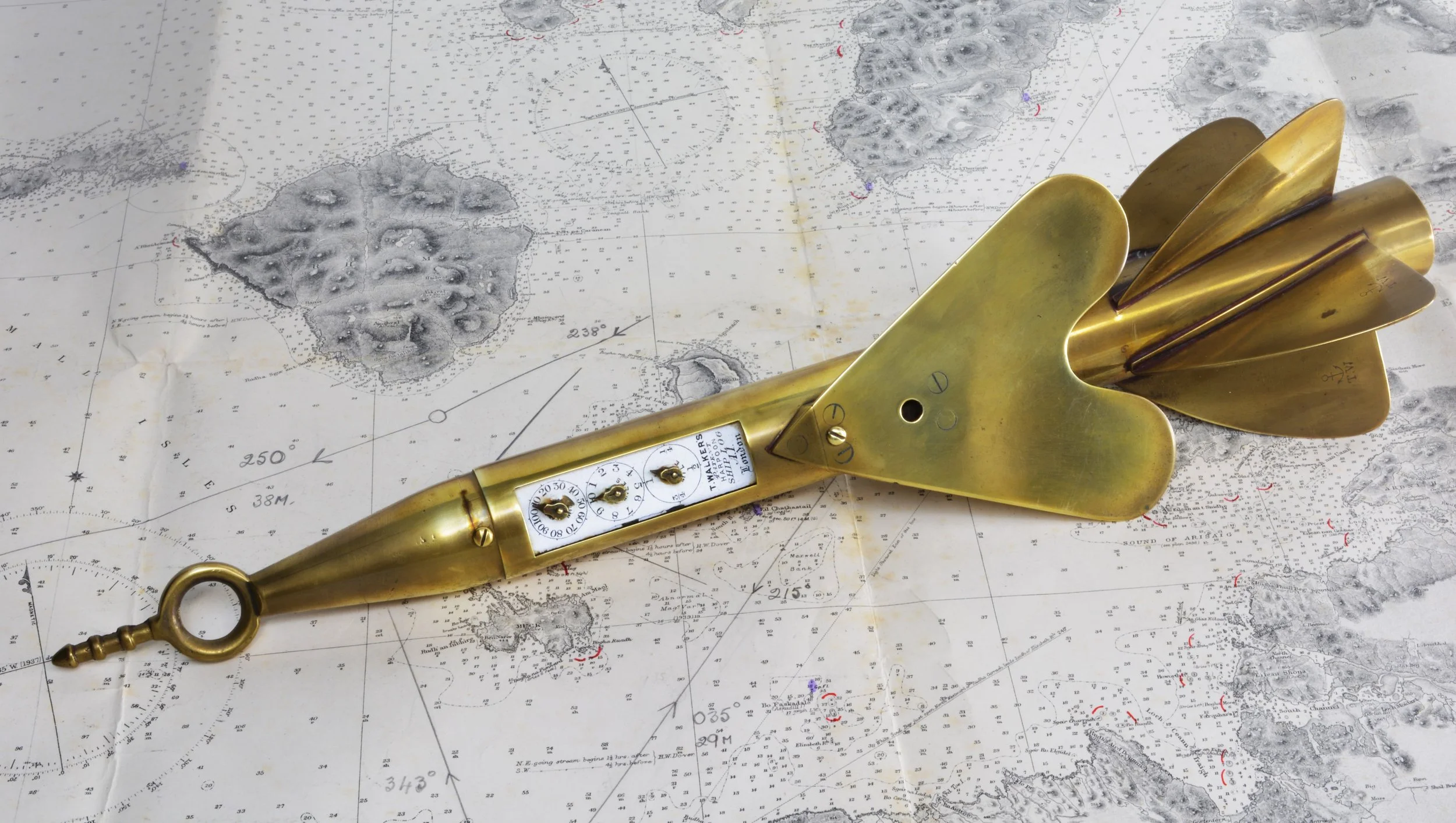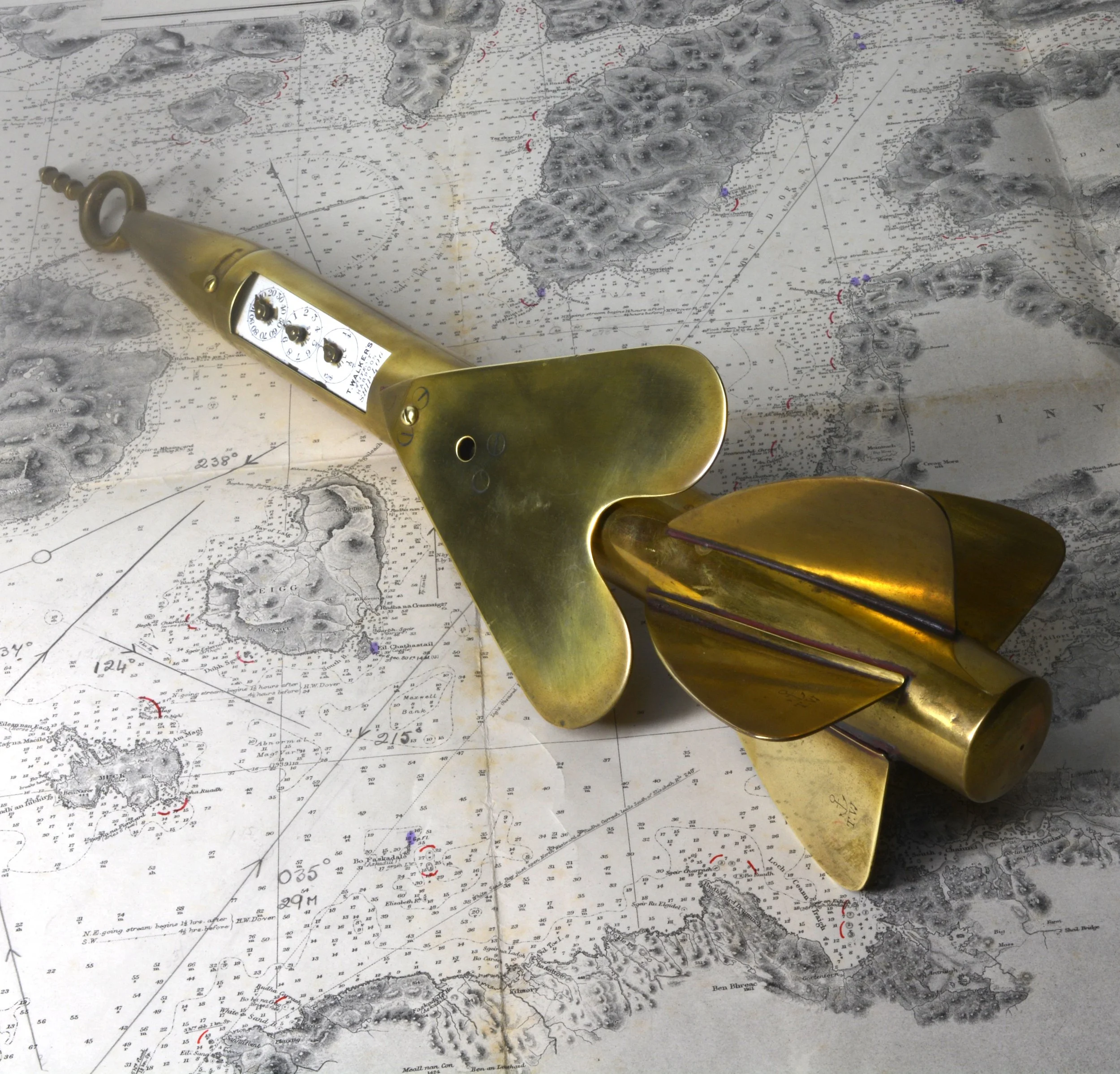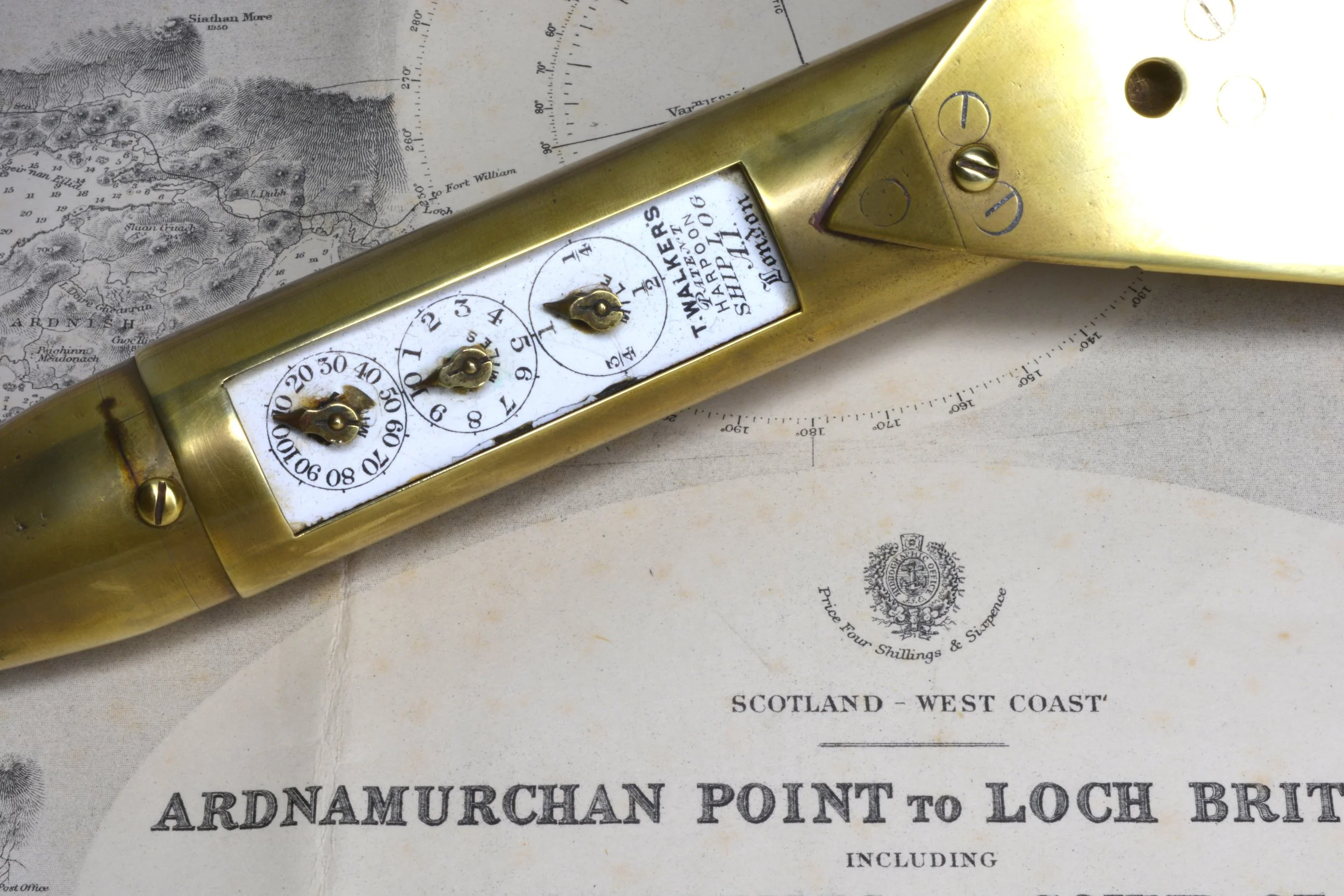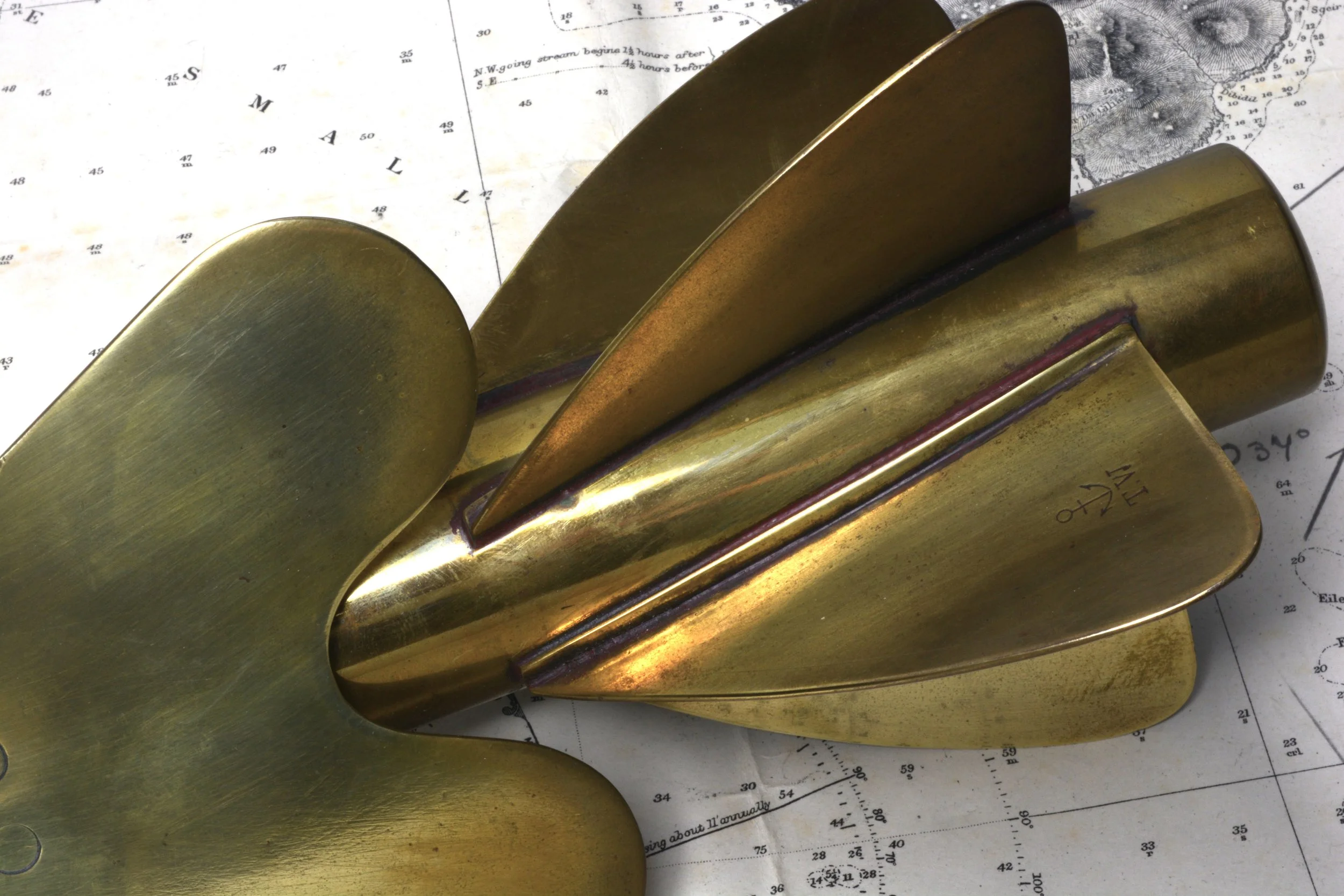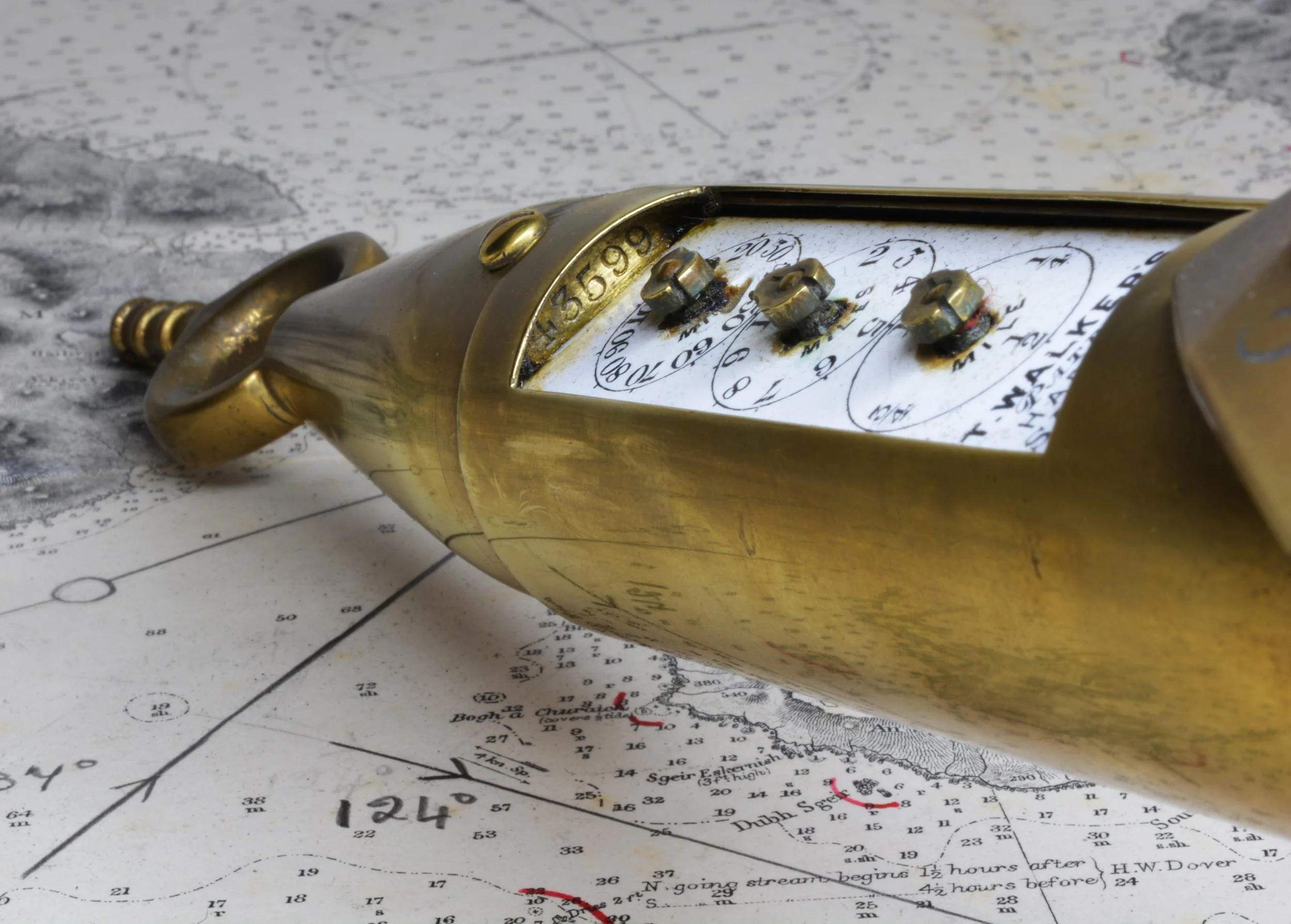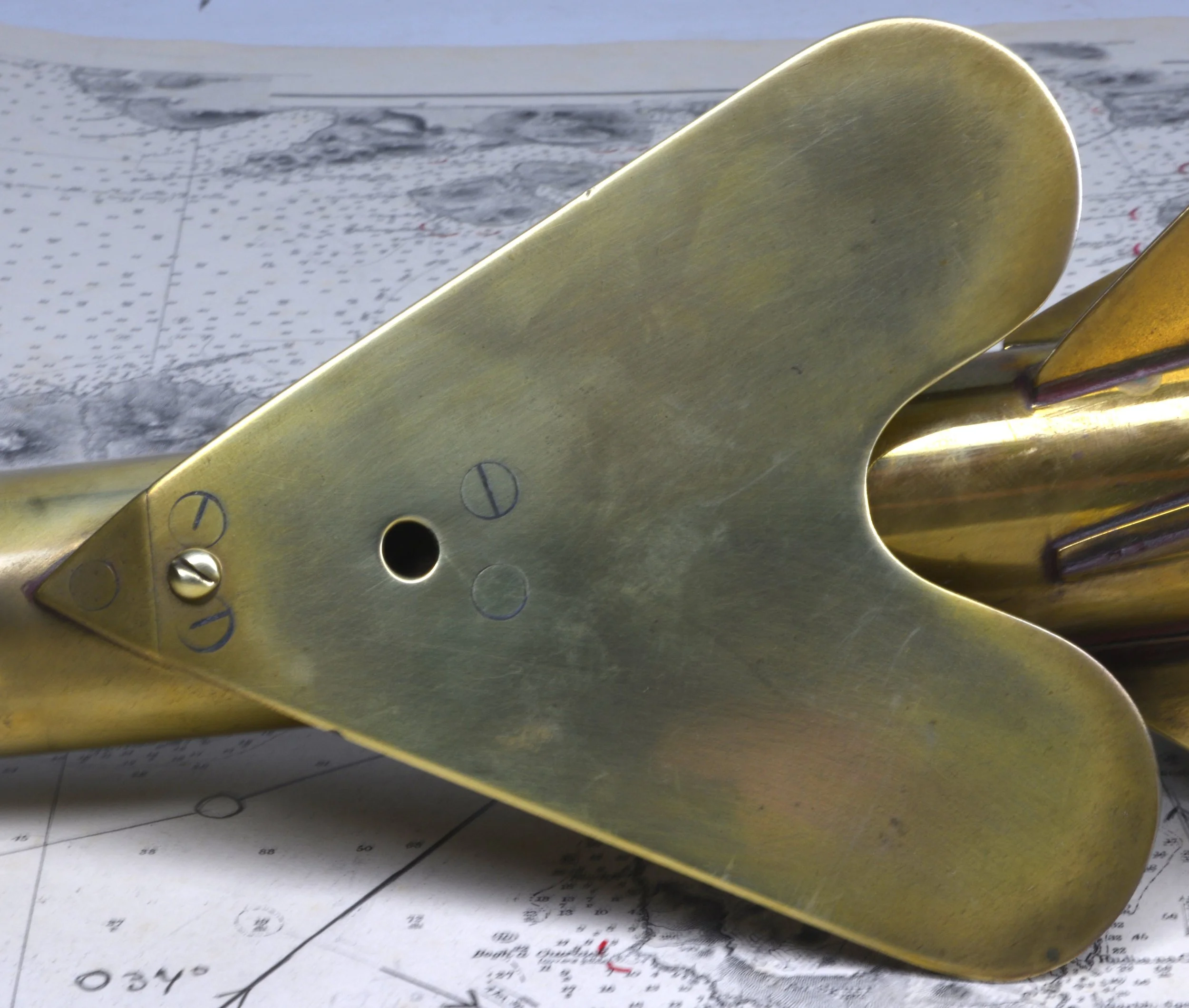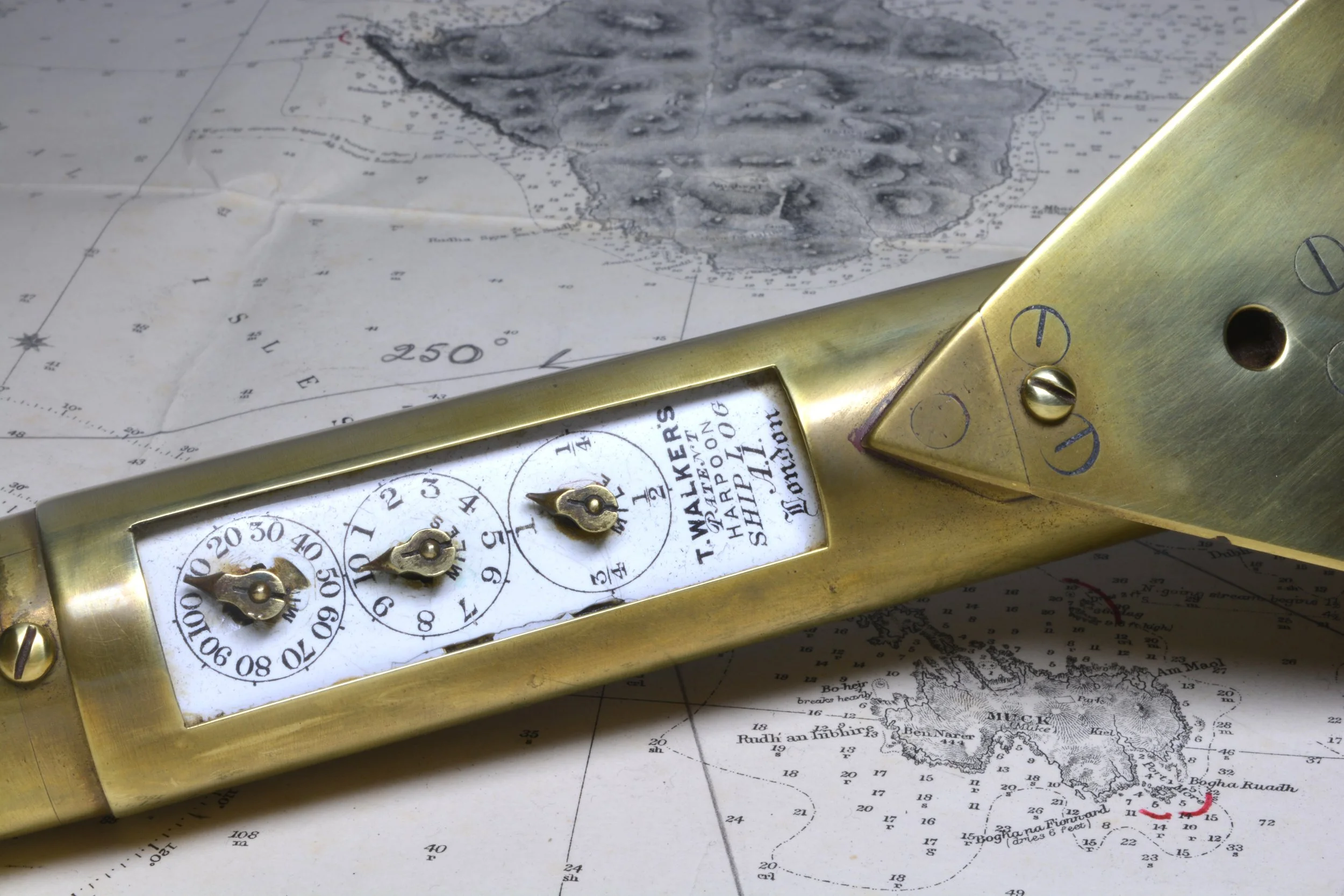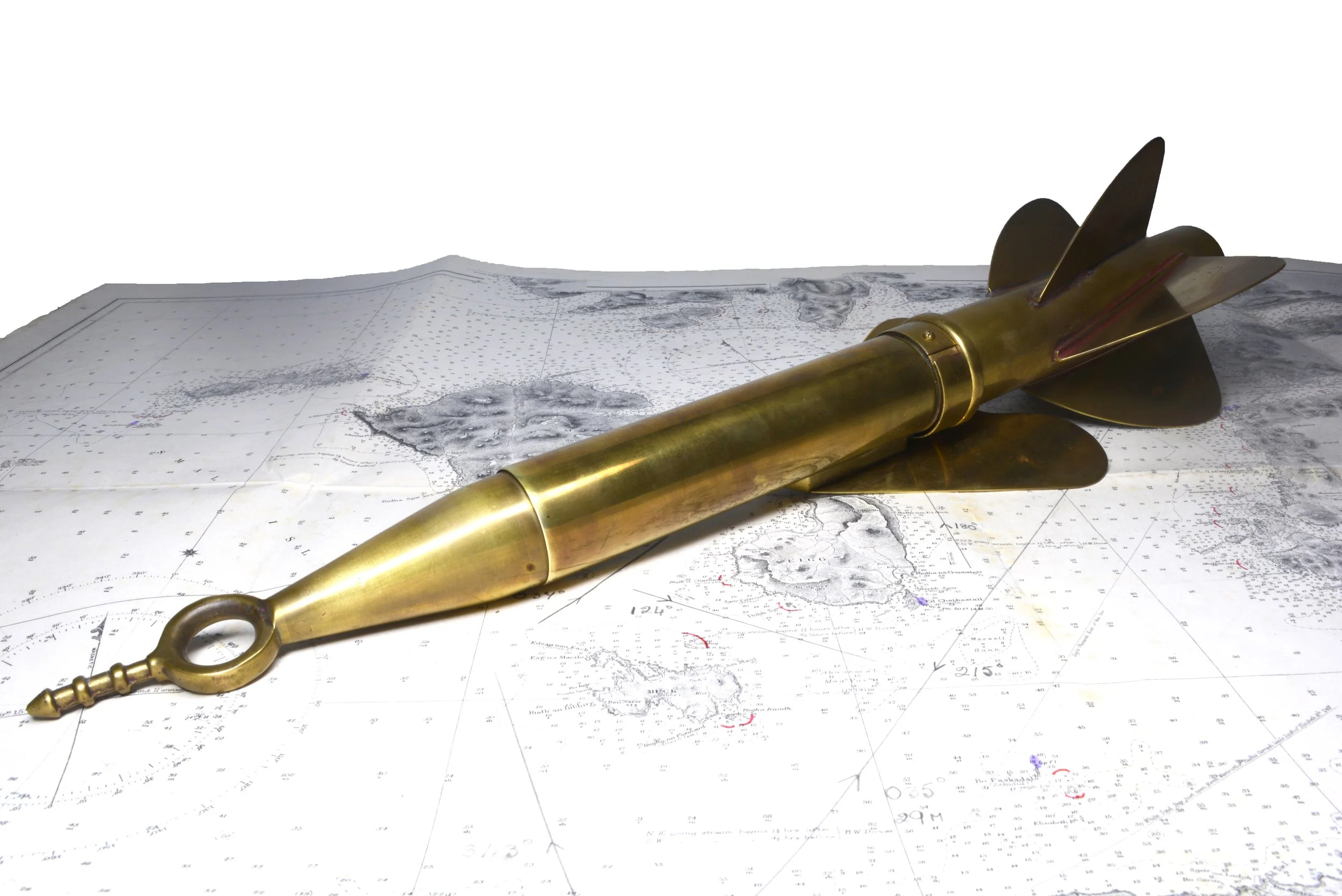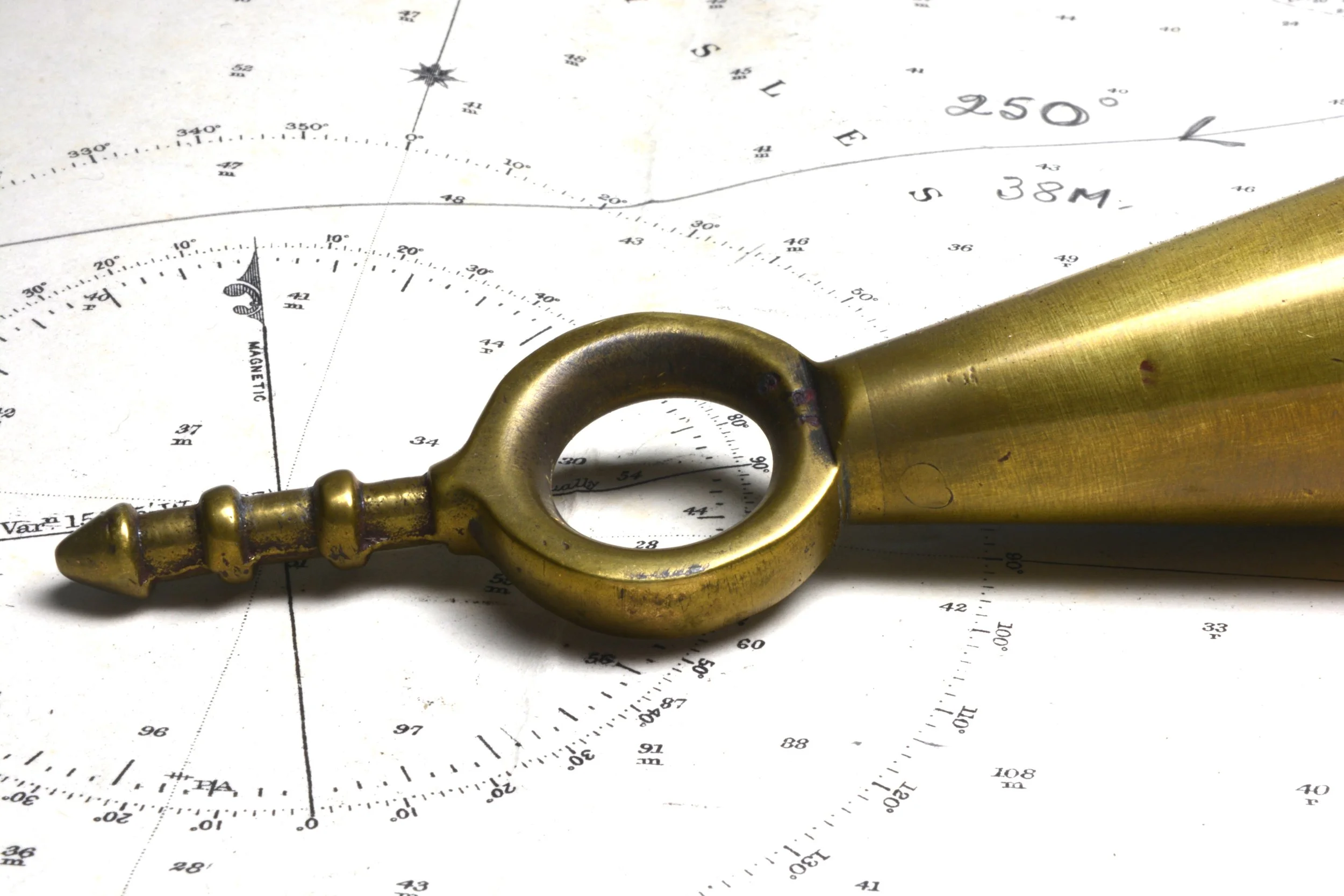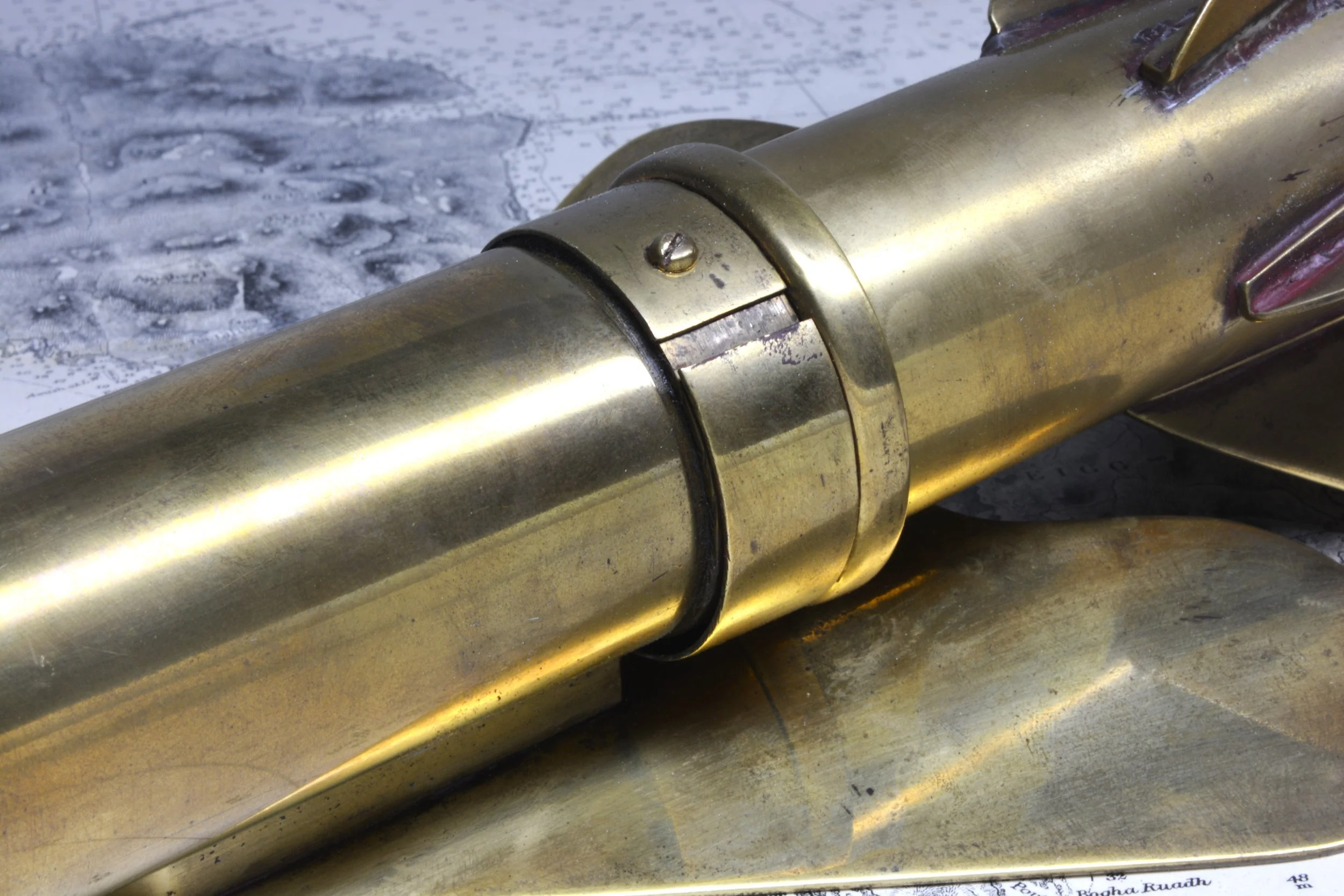
Victorian 'Harpoon' Ship's log, Thomas Walker of London, 150 years old!
A rare Victorian-era 'harpoon' type ship's log by Thomas Walker of London. This, being the company's 'A1' model, was built to a design that was patented in the early 1860s. Unlike later incarnations that were safely attached to a vessel's taffrail, this model was designed to be thrown into the sea and towed astern, the five rotating fins powering an internal mechanism of geared cogs that turned the pointers on the three dials on the enamelled display panel. These dials gave precise measurements for distance travelled, from one quarter of a nautical mile right through to 100 nautical miles. In the days when ship's navigators had to rely on a process of 'dead reckoning' rather than the sophisticated satellite-based navigation systems that we enjoy today, this critical information was used together with charts and compass bearings to plot a ship's course at sea.
Each of the five rotating fins is engraved with the company's initials and anchor emblem. The adjacent stabilising wing was intended to prevent the log itself from rotating. The enamelled dial plate is marked 'T Walker's Harpoon A1 Patent Ship Log, London'. A concealed brass flange to one end of the dial plate bears the serial number 43,599, likely dating this particular instrument to the late 1870s.
Brass construction with a porcelained enamelled dial plate. 53cm long, body diameter 43mm, propeller width 14cm.
Condition: As these instruments were designed to be submersed in sea water, they required regular greasing and flushing with fresh water to maintain them in good condition. Few survive in such good condition as this example, remarkable given its 150 years or so of age. The brasswork is excellent with just a little tarnishing. There is a single chip and some edge losses to the enamelled dial plate as shown in the images, but it is otherwise in good condition. The fins turn freely with only very slight lateral movement, possibly due to deterioration of the soldered joint to the brass retaining band (partially detached, last image), though performance appears to be unaffected and the dials turn as they should.

